Last Updated on June 7, 2023 by a Friendly Gardener
If you are a gardener with a Snake plant in your indoor houseplant collection, you know how striking these plants can be with an almost sculptural appearance. So, when those elegant spear-shaped leaves begin to soften and turn mushy, you know your plant is in trouble.
Snake plants are appreciated for being notoriously resilient and hardy plants, yet they are susceptible to foliage turning mushy.
Why Is My Snake Plant Mushy?
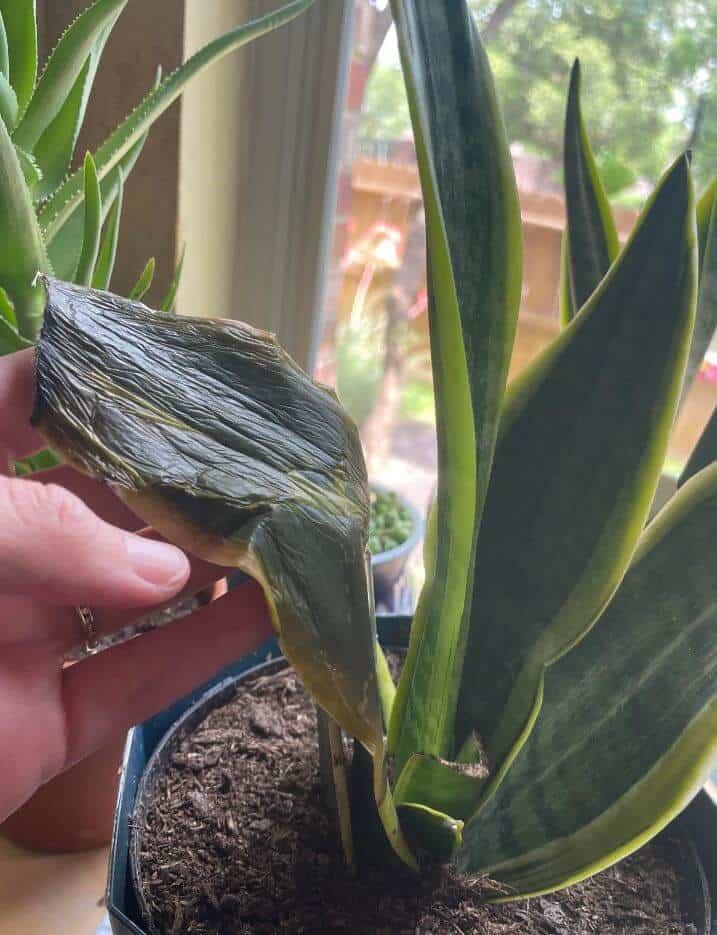
Snake plant mushy leaves are generally caused by overwatering. This plant care mistake is common with snake plants, particularly if you have several varieties of houseplants. When watering one plant, it’s easy to water them all. Snake plants are somewhat drought-resistant, so when they are overwatered, the root system will not be able to absorb the excess water. The soil remains waterlogged, and a mushy snake plant is the result.
While overwatering is the most common cause for mushy snake plant foliage, there are other reasons such as overly high humidity levels, improper drainage, infections and diseases, or pest infestations.
How Should Snake Plant Leaves Look?
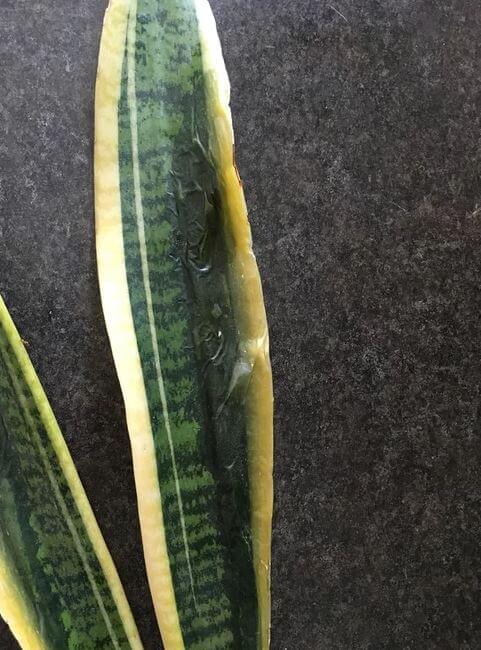
Your plant’s foliage should feel sturdy to the touch with feature a certain amount of spring. If leaves begin to slump, look, and feel mushy, and release liquid, your plant may have a fungal infection or case of root rot. To save your plant, serious intervention will be needed and what you need to do will depend on the cause of your plant’s condition.
Causes for a Snake Plant Getting Soft
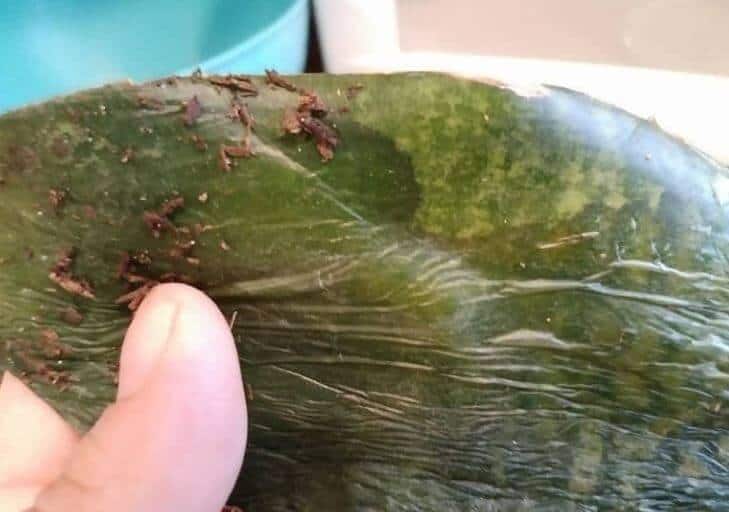
The reasons for a snake plant’s foliage becoming mushy are varied and will require differing environmental adjustments and care solutions to reverse the situation.
Overwatering
Most snake plants die from incorrect watering. Overwatering is usually due to watering your snake plant too frequently. Snake plants do not do well when left sitting in damp soil. If you water too often, the soil bed never has an opportunity to dry out. Consistently damp soil is also a perfect venue for bacteria and fungi to proliferate and they will eventually attack the root system and move upward to the foliage.
Leaves will turn mushy, become yellow, and then turn brown. These infections attack the lowest part of leaves at the plant’s base and will progressively move upward. Leaves may begin to fall and appear floppy because the leaf base is no longer able to support the entire leaf. Because snake plants do not require much water as they store moisture in foliage, it’s easy to overwater.
Check the soil bed approximately two to three inches deep every week. If it feels dry, you can water it. It will not be enough to reduce the watering schedule if the plant is already exhibiting mushy spots. You will need to clean and repot.
Remove your plant from its pot and clean it. Treat your gardening shears with rubbing alcohol to disinfect them and trim away compromised roots and any leaves with mushy spots. Roots that smell, are dark colored, black, or brown, and feel slimy, need to be removed and disposed of. Any plant part that looks compromised should be pruned off.
After pruning insert the root system in a solution of one part water and three parts hydrogen peroxide and rinse. Repot your plant in fresh potting soil. Wait to water your plant and reduce watering for a couple of months. Do not place your recovering plant in direct sunlight.
Improper Soil
Choose a soil mix formulated for succulents, as some potting soil mixes have too much water retention making it difficult for them to dry out. When you water your snake plant check to see how many days are necessary for the soil to dry out. If container soil requires more than five days to dry, it’s the wrong type of soil mix.
Infections
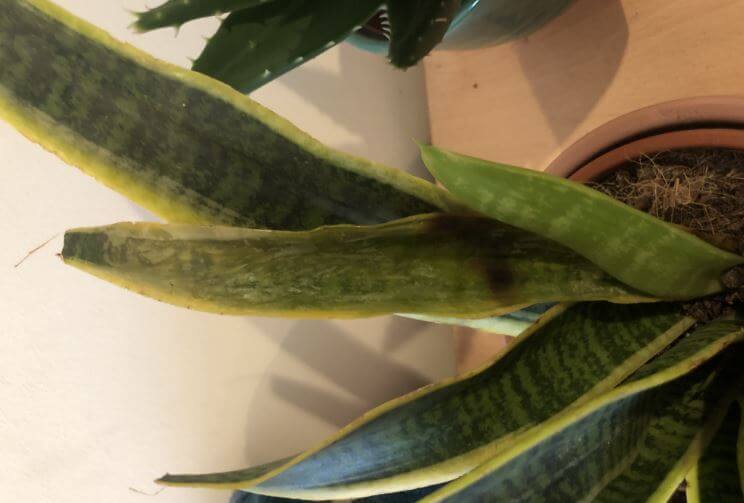
Snake plants are not only susceptible to root rot but also to bacterial and fungal infections. Infections can happen for several reasons. Your plant may be exposed to bacteria or fungi when you bring a new plant home that already carries the infection, or you may have touched an infected plant and then touched your snake plant. Gardening shears that have not been sterilized can transfer germs or infections can be carried by pests.
Bacteria or fungal infections can be recognized as they nest in moist dark spots and may feature a yellow halo. These areas gradually grow bigger and can destroy the plant. Excess moisture and high humidity levels also contribute to an infection spreading.
Environmental Temperature
Snake plants prefer room temperatures that measure in the range of 65° to 85° F. Snake plant cells inside foliage will begin to die when they are exposed to temperatures below 55° F or that rise above 90°F. turning snake plant leaves mushy. Snake plants can potentially adapt to somewhat higher or lower temperatures, but this must be done gradually. They do not react positively to abrupt temperature changes.
If you plan on moving your plant to a new location, move it for an hour or two daily in the beginning. Then gradually increase the amount of time in the new location. If your plant is in a spot that changes temperatures often, watch it closely. Also, avoid exposing your snake plant to drafts.
Drafty doorways, windows, fireplaces, heating, and air conditioning units all pose a threat to your plant’s health. If your plant has developed soft patches due to temperature shock, these leaf parts need to be removed. By moving your plant to a space with the correct temperature range, your plant should recover without further treatment.
Can Mushy Snake Plant Leaves Be Fixed?
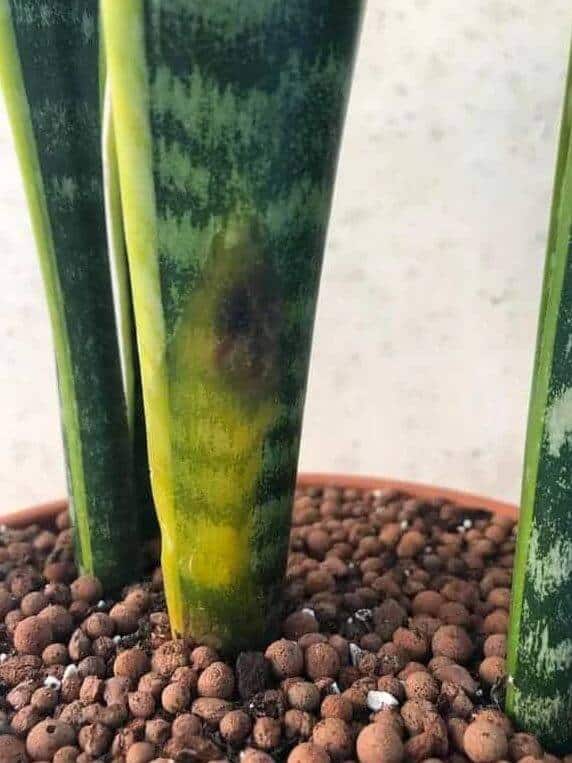
The best chance for fixing soft, mushy leaves is by treating the cause. Soggy leaves are merely a symptom. Your first step should be to allow the soil bed to dry out before you water anew. This will aid root systems to aerate. Make sure your plant is potted in the correct type of soil so that it drains well.
Check that your container does not impede drainage. It should have enough drainage holes. You can also add a layer of gravel at the bottom of the container and use a pot in terracotta or clay that is porous and will aid in wicking away excess moisture.
Place your plant in a more arid environment without much humidity. The area should be well-ventilated. If you live in a climate that has high humidity, a dehumidifier can help. Also examine your plant weekly for signs of pest infestations, particularly scale insects, mealybugs, and spider mites. Remove any damaged leaves and treat your plant with neem oil or insecticidal soap.
For fungal infections, remove damaged tissue, sterilize pruning tools, and treat your plant with a fungicide.
A Final Thought
Mushy leaves on snake plants are never a good sign. If an infection is severe and quite advanced you may not be able to save your plant, hence a weekly examination of your plant can help prevent any problems from becoming too severe.

